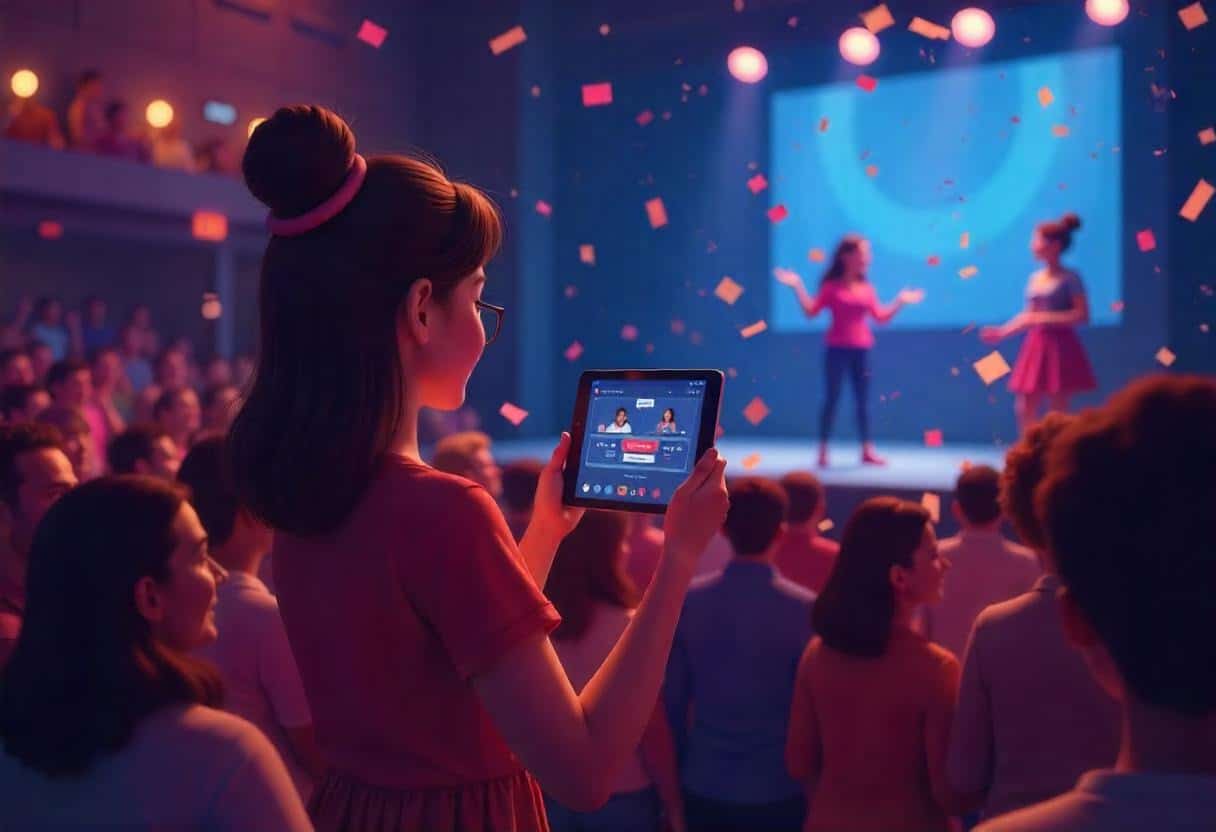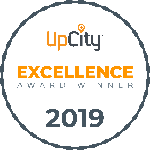Cue the engagement: emojis on screen, cheers in the room.
This is the specialty of hybrid events: two energetic worlds in one. Such gatherings are a big deal now.
It’s because:
- First, you reach way more people.
- Second, you save money on travel and still go big.
- Eventually, you boost engagement, on-site and online.
As per the stats-
Around 62% of event planners say that the future of events is hybrid. [Source: Skift Meetings]
The reason is those benefits.
But it can go wrong. The culprits- technical glitches, awkward silences, and messed-up hosts.
This can lead to lots of confusion in the room and lots of people zoning out. You don’t want that right?
To avoid the issue, why not focus on a proper hybrid event production? It’s the secret sauce to keeping both audiences hooked, converting interest into action, and making the event unforgettable.
You get better tech, smoother flow, and higher energy that hits screens and seats the same way.
That’s how an event shines both on and offline.
- For Hybrid Event Production, you must get help from a video production company for better results. Contact LocalEyes for more information.
What Is A Hybrid Event?
An interactive bash.
A hybrid event brings together in-person and virtual attendees in one experience. The goal?
To ensure both audiences:
- Feel included and involved
- Can interact, network, and engage
This allows some participants to attend physically at a venue while others join remotely through online platforms.
Not just that. If the event is recorded, other viewers can also check the asynchronous content out.
5 Benefits of a Hybrid Event
- Increased Reach and Accessibility
- Enhanced Engagement
- Cost-Effectiveness and ROI
- Flexibility and Adaptability
- Data-Driven Insights
Comparison of In-Person, Virtual, and Hybrid Events
| Features | In-Person | Virtual | Hybrid |
| Audience | Onsite only | Online only | Onsite+Online |
| Engagement | Face-to-face, physical | Chat, polls, live, Q&A | Combined |
| Cost | Higher | Lower | Medium |
| Accessibility | Limited (location-based) | High (access from anywhere) | Very high (flexible for everyone) |
| Networking | Personal interaction | Virtual breakout rooms | Mix |
Hybrid Event Production: Step-by-Step Guide
Pre-Production Planning
This is like the thinking and preparing stage. Because you can’t just wing a hybrid event.
Know Your Audience
Ask yourself:
- Who’s coming in person?
- Who’s joining online?
- What do both groups expect?
You may have 200 people at the venue and 1,000 online. Both deserve great experience- but differently.
For example-
- In-person folks love direct eye contact and shaking hands
- Virtual folks want smooth streams and interactive buttons
Study the demographics to learn more about the audience during hybrid event video production. This includes: gender, profession, interests, place, and culture.
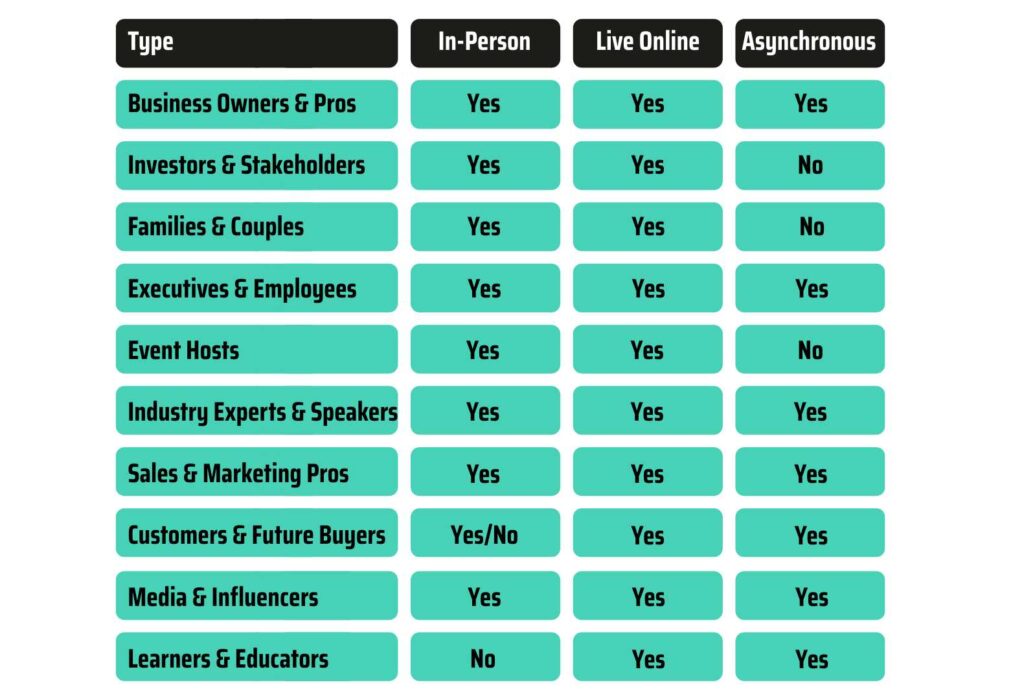
Common audience and attendee types:
- Business owners and professionals
- Event Hosts
- Families and Couples
- Customers, Clients, and Potential Buyers
- Investors and Stakeholders
- Corporate executives and Employees
- Vendors and Partners
- Industry Experts and Speakers
- Media and Influencers
- Learners and Educators
- Sales and Marketing Pros
Research both groups. That way, you can customize content and engagement strategies to meet their needs.
It’s better to talk to a hybrid event management. They can help you with this.
Define Objectives
Be clear from the start. Why are we doing this event?
Is it to educate, entertain, launch, or train?
What should attendees and viewers feel or do after the event?
If there are multiple, take a note and narrow them down. Identify the primary purpose of the gathering.
Communicate with your video production house in this case. Defining goals can help you and the team-
- Stay focused
- Shape the content
- Optimize resources
- Target the right people
- Bring your ideas to life
For example-
You’re hosting a health summit. The goal can be to educate and collect leads. Your success metrics-
- E-mail sign-ups, replay views, and poll participation.
Want yourself the best hybrid event production companies? Try LocalEyes.
Choose The Right Venue & Platform
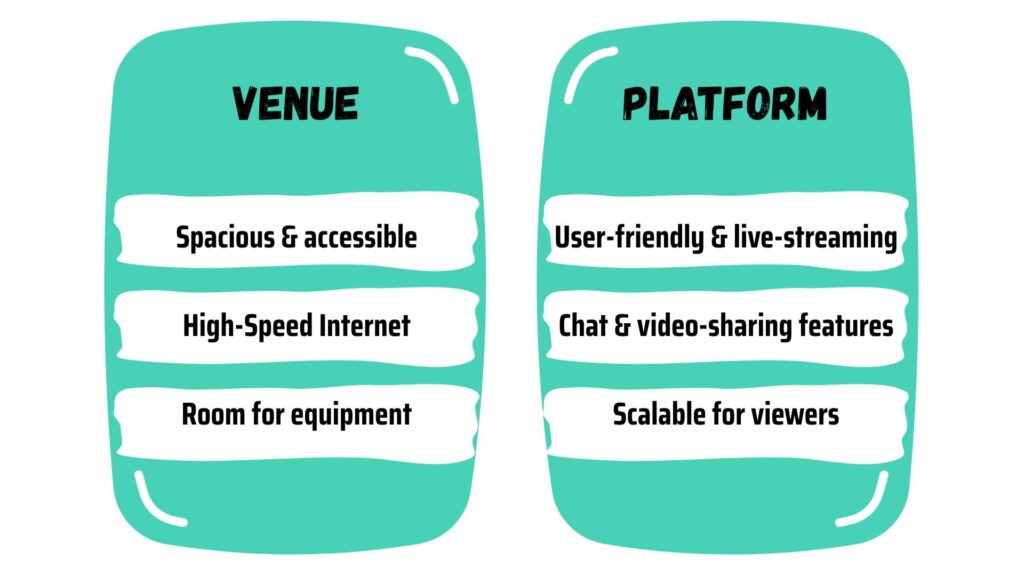
Start with the venue.
It should be spacious enough for in-person attendees, offer good facilities, and have high-speed internet.
Also, ensure the venue has space for all the extras, like screens and sound systems. They should work as engagement boosters, not obstacles for people.
Then, the online platform.
It should be user-friendly and support features like live streaming, chat options, and easy video sharing. Plus, be sure to pick one that can handle several virtual folks.
You may consider YouTube, Facebook, and Zoom for that.
Focus on the audience’s needs. The venue must have easy access for all, whereas the platform must be easy to navigate for online viewers.
Test both the venue and platforms beforehand. It can help you avoid technical problems.
Set-Up Hybrid-Friendly Scripts
Have a well-crafted script.
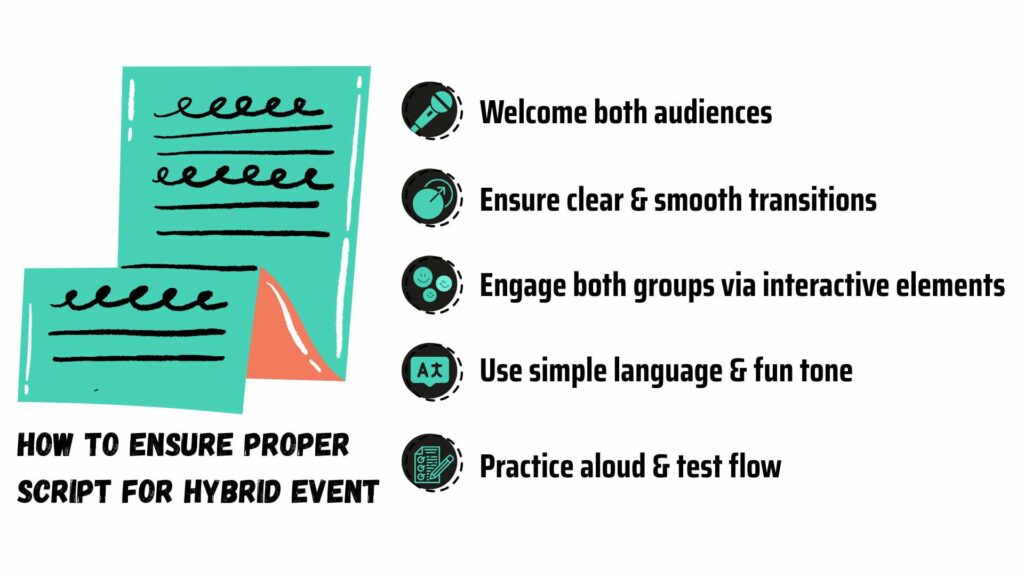
The scriptwriting should acknowledge both in-person and online audiences. Try to include specific cues for transitions.
Start with a clear, thrilling intro. Welcome to both groups. That way, each person will feel included.
Use simple language in your scripts. This helps all participants and viewers understand easily.
Say phrases like “For those online” or “In the room” to connect with everyone.
Add moments for interaction. Ask questions that can prompt offline and online guests to respond.
Assess the flow of the event from the intro to session changes. Make sure the script reflects this.
Practice the script out loud. This helps you find tricky parts and adjust accordingly.
Technical Setup & Equipment
Quality comes from here.
Both the live and virtual audiences can get the best or worst experience based on the setup and equipment.
Audio-Visual Equipment
Buy high-quality audio-visual equipment. They’re essential for a hybrid event.
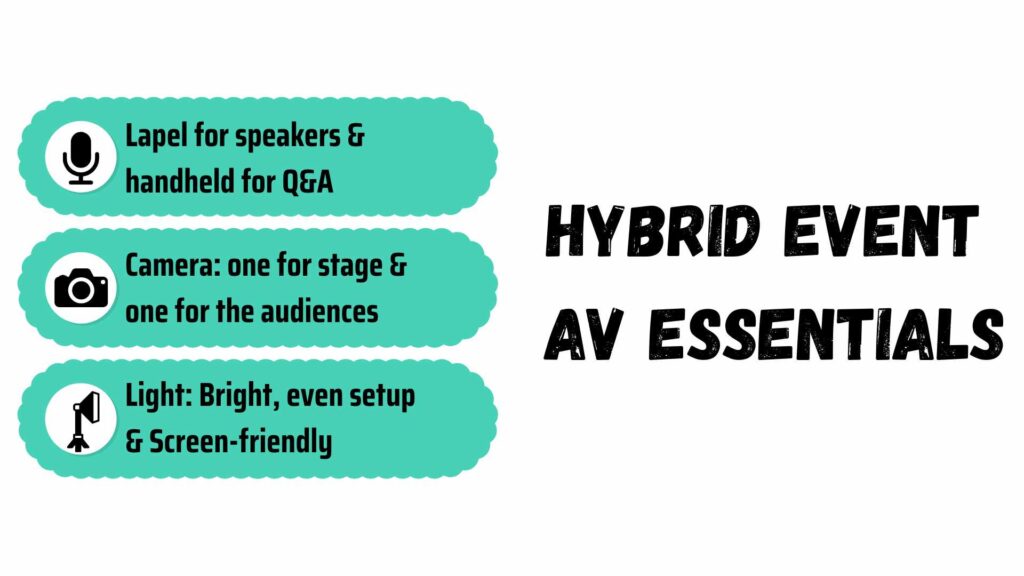
Microphones
Use lapel mics for speakers and handheld mics for audience Q&A. These ensure clear sound and voices.
Cameras
Have at least 2 professional-grade cameras. One focused on the stage, and the other on capturing the audience’s reaction.
Lighting
The place has to be well-lit. Ensure that any visual presentations are visible to both groups. Get a top-notch lighting setup.
Streaming Setup
This one’s for the precious viewers. You want them to have a smooth experience with your event.
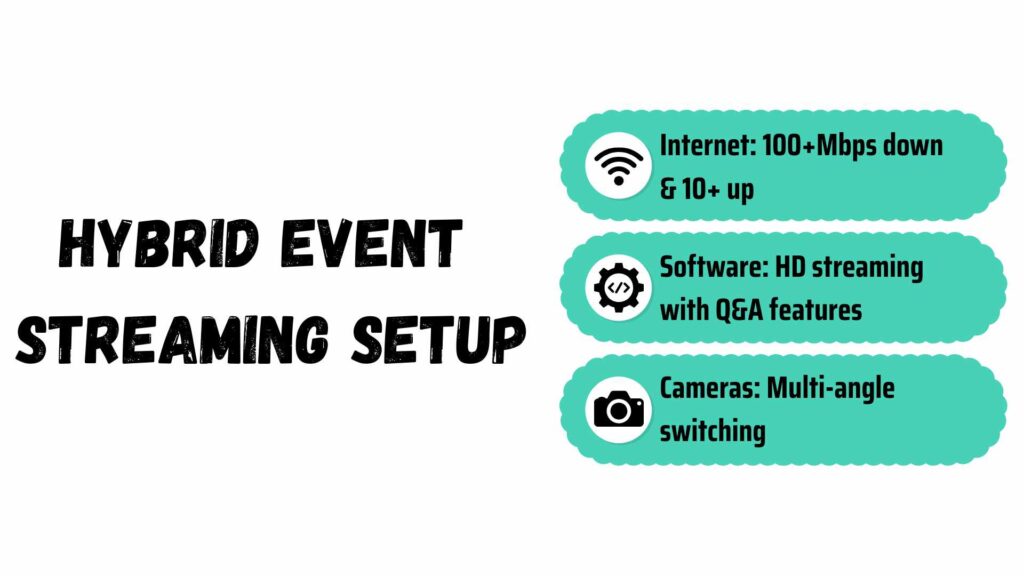
Internet Connection
It has to be high-speed. Experts say “download speeds of 100+ Mbps and upload speeds of 10+ Mbps are quite fast enough to handle nearly any online”.
We suggest you use a wired connection instead of WiFi. This will minimize disruptions.
Streaming Software
Pick a software that enables high-definition streaming. Ensure it allows for interaction features like polling and Q&A. For example: Zoom
Multi-Camera Switchers
Such devices provide smooth transitions between live and virtual views. Plus, they ensure varied perspectives that lead to boosted engagement.
On-Site Crew & Remote Tech Support
So, how does a successful hybrid event thrive?
It’s when you have two powerhouse teams working perfectly together. The onsite crew and remote tech support.
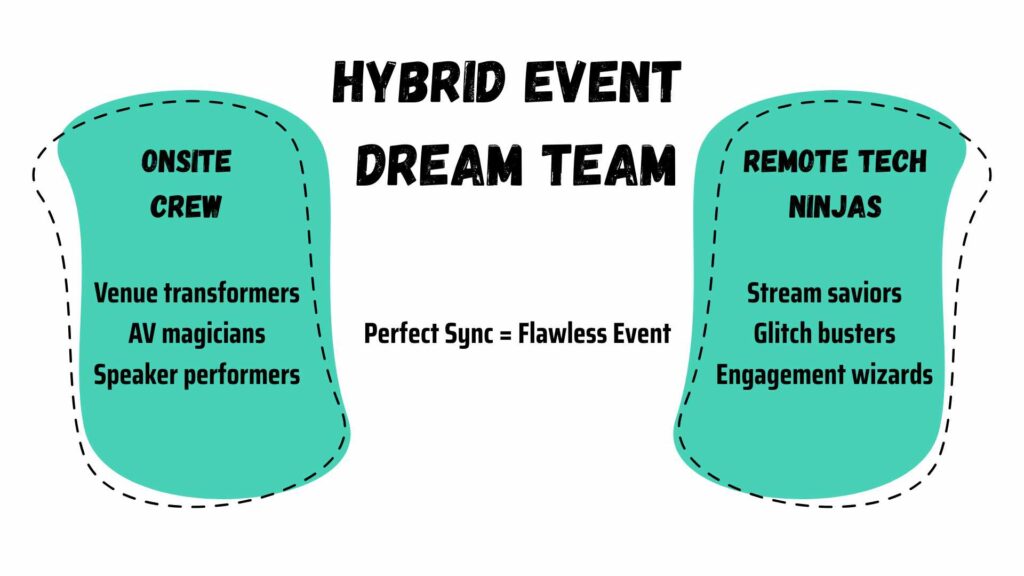
The team handling the event at the venue is the heartbeat of the live experience. They-
- Transform venues
- Fine-tune AV setups
- Ensure every speaker feels like a rockstar
You can call them the troubleshooters or energy-bringers. Because they uplift the environment in real-time.
Contrariwise, the team online operates like digital ninjas. They’re sleek, swift, and always one step ahead. The virtual event producer-
- Troubleshoots streaming glitches
- Saves virtual attendees from tech despair
- Handles the online viewers and engagement smoothly
When these teams sync up, you can expect flawless execution and engaged audiences.
On-Camera and On-Stage Coordination
A great hybrid event is like harmony.
Whatever happens on stage goes smoothly with what viewers see on screen. For this, coordination matters.
On stage, presenters and performers focus on delivering their best to entertain in-person attendees.
- Hitting their marks
- Nailing their timing
- Keeping their energy high
Contrariwise, the camera crew works behind the scenes to engage viewers online. This includes-
- Getting the best camera angles and shots
- Maintaining continuity
- Framing every important moment and reaction
The director ties it all together and coordinates both teams through headsets and hand signals.
Here, you have to ensure hiring the best teams for the job. When collab clicks, the audiences get the best of both- whether they’re watching it live or online.
Engagement Strategies for Hybrid Events
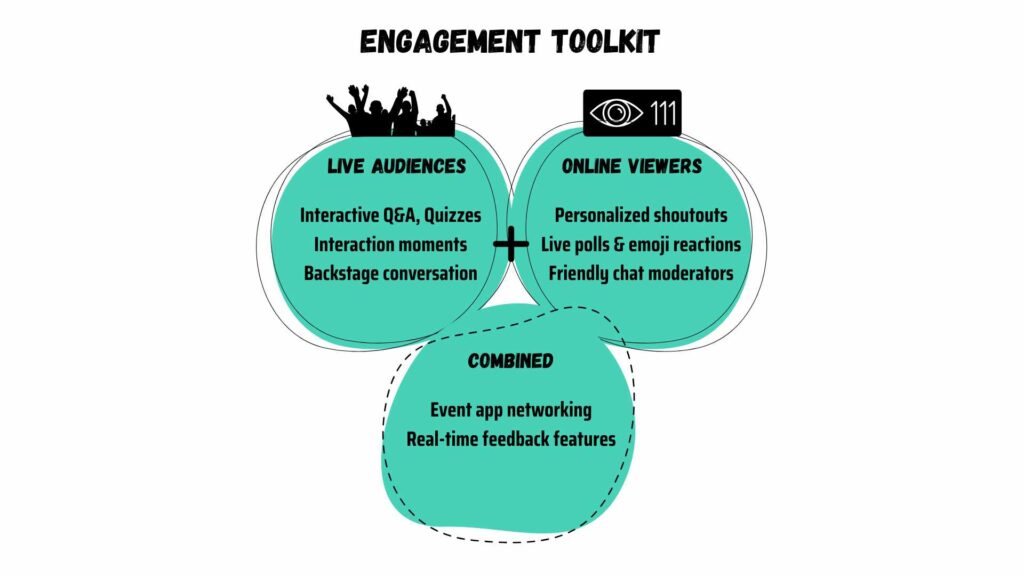
One of the objectives of hybrid events is engagement. So, you must have specific strategies for that.
Engagement isn’t just a buzzword. It turns passive attendees into active participants.
Whether your audience is in the room or tuning in from their couch, here’s how you keep them hooked-
For the live crowd- Increase the energy!
Audience Interactions: Don’t just talk to them. Ask open-ended questions, throw in a fun quiz, and hook them with some games.
Get Them Moving: Break the monotony with live activities. It can be
- A quick “stand up if you agree” moment or
- Asking speakers and panelists to share their stories
Behind-the-Scenes Access: Ask speakers unfiltered questions off-stage. Raw, real interactions create memorable moments.
For Virtual Attendees- Make them feel seen
Personalized Shoutouts: A simple “Hey [Name], great question!” makes them feel like part of the event.
Live Polls and Reactions: Use interactive elements to keep viewers clicking and engaged. This includes- emoji reactions, instant polls, or even a “raise hand”.
Dedicated Chat Moderators: Designate a fun moderator. A lively chat host can turn silent lurkers into active contributors.
For Both Worlds
Using Interactive Services Online and Event App: Encourage attendees to try event-specific apps or websites for live updates, networking, and feedback.
This is like a clear call to action (CTA) that can help boost engagement.
Post-Production and Replay
The show is over. But the buzz doesn’t have to end.
You have to do something, so the event stays there. That’s where post-production comes in.
This stage brings together all the elements captured during the event. Here, you transform them into something special.
Recording
Video recording your hybrid event is like freezing lightning for good. It ensures both live and virtual audiences can relive the energy anytime.
So, capture all sessions and moments. These include-
- Panels
- Keynotes
- Discussions
- Candids
- Highlights
Recordings help let everyone catch up later and keep the content evergreen.
Editing
Now, make the footage shine in post-production.
Create engaging content from your event to keep the buzz alive. This involves doing stuff like-
- Picking the best clips
- Arranging key moments
- Adding smooth transitions
- Using energetic music/sounds
- Inserting text/graphics
- Removing noise and enhancing audio
- Adjusting colors
- Fine-tuning the edit
Content Making
Now, keep the buzz alive. Create content out of the program. Some of the most popular event videos are-
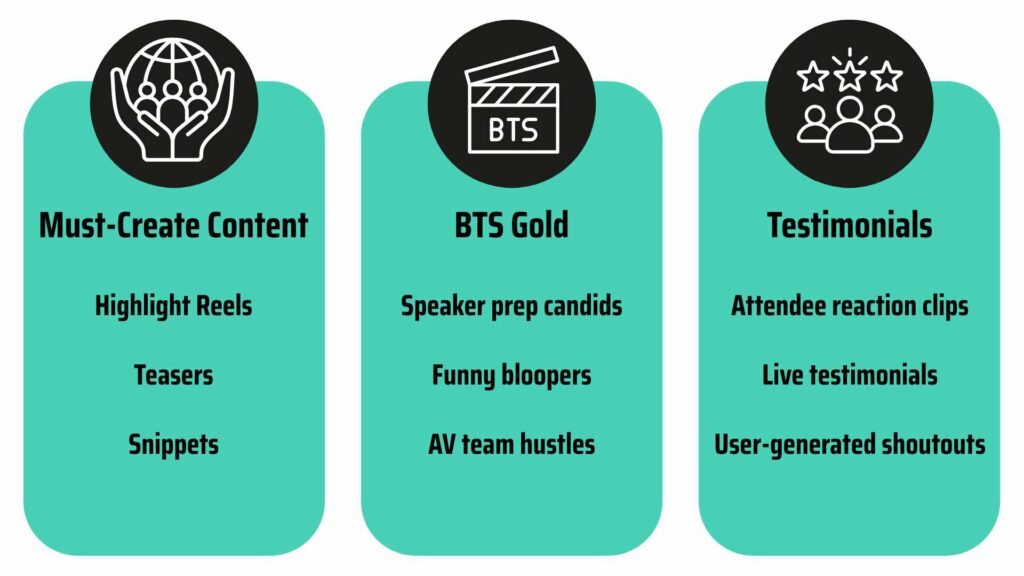
Highlight Reels
Produce tight, punchy video clips. They show the best moments from your event. These include the biggest laughs, mic-drop moments, and key takeaways.
Teasers
Share teaser clips on social media. These are short, snappy previews to hype up next year’s event.
Social Snippets
Pull quotes, audience reactions, and speaker soundbites for Instagram, LinkedIn, and TikTok.
Behind the Scenes
Show the human side. People love seeing what happens off-stage. Add:
- Candid Clips like speakers prepping, the AV team hustling, or attendees laughing
- Bloopers and Banter like lighthearted mistakes or unscripted moments
Testimonials
Nothing builds trust like real voices. Add moments to your videos like-
- Quick Attendee Reactions
- Feedback
- Social Shoutouts
Analytics and Improvement
You’ve wrapped up the program, event content making, and distribution. Now?
It’s not over yet. Take time to analyze the metrics. Look for patterns in engagement and content preferences.
This data will help you identify what worked well and what didn’t. That way, you can perfect your approach for future hybrid events.

Focus on metrics like-
Engagement: Are viewers glued to the screen? Strong engagement means your content is a crowd-pleaser!
Views: How many eyeballs are on your event? More views mean bigger reach!
Retention: Did viewers stick around? Longer watch time means more engaging content.
Play Rate: Did visitors hit “play”? More clicks mean more curiosity sparked!
Social Sharing: Are individuals talking about it? The more likes, shares, and comments, the better. This shows the content is going viral.
Conversions: Did viewers turn into leads? More conversions indicate your event’s success.
Remember
The better these numbers, the bigger your event’s impact!
Evaluate analytics. Use tools like-
- Google Analytics
- Social Media Insights and
- Hubspot
Check feedback scores. Identify areas that earned high praise and those needing fixes.
8 Tips For Maximizing Engagement
1. Look At Both Crowds
Don’t ignore any audience, be it on or offline. Switch between the camera (for online folks) and the room (for live guests).
This connection creates a bond with almost everyone. As a result, no one feels left out.
2. Rehearse Transitions Between Segments
Train your team. Ensure switches between live and virtual content are smooth. Practicing makes everyone more comfortable with switching gears!
This will help make the videos feel natural, not clunky.
3. Keep A Steady Pace
Not too fast, not too slow. A consistent flow keeps both audiences engaged.
Too fast could confuse participants. And if it’s too slow, it might lose their interest. So, just right to hold attention.
4. Show, Don’t Just Tell
Use engaging visuals- graphics, videos, and animations.
This helps maintain attention and keep energy levels high. People remember visuals way better! In fact, studies say-
65% of humans are visual learners.
5. Have A Virtual Helper
Designate a team member who can specifically handle virtual interactions.
The person will focus on online chats, tech issues, and keeping remote guests involved.
6. Mix it Up Often
Create interactive moments every 10-15 minutes.
This can be adding a quick poll, Q&A, or fun fact. Short, interactive bursts of engagement recharge audience attention.
7. Camera Magic
Switch angles smoothly. Focus on different speakers to keep the virtual experience fresh.
This ensures online viewers don’t get bored staring at one shot.
8. Make It Fun and Get Social
Use humor and light conversation.
Add some jokes to the event. Share personal stories to connect with attendees. This will make the program more interesting and help people connect.
5 Common Mistakes To Avoid and Solutions
| Mistake | Solution |
| Ignoring the Virtual Audience | Allocate time. Connect with them through interactive tools, chats, and dedicated sessions. |
| Technical Glitches Due to Poor Preparation | Run multiple tech rehearsals. Check all equipment a day before the event. This helps resolve any potential issues. |
| Low-Quality Audio | Always buy quality audio equipment. Also, check the sound systems before the event starts. |
| Overcomplicated Setup | Keep it simple! Focus on core elements to avoid overwhelming attendees with too many features. |
| No Backup Plans | Always have a backup for tech, content, and contingency plans to manage unpredictable circumstances. |
- If you are hyping up your hybrid event production lately, get the best quality professional videos from LocalEyes Video Production
FAQs: Hybrid Event Production
How to make an event hybrid?
Combine an in-person venue with a virtual platform. Use cameras, mics, and streaming software to broadcast the event live. That’s the basic way to make the event hybrid.
What is the difference between virtual and hybrid events?
The key difference between virtual and hybrid lies in the audience. Virtual is 100% online whereas hybrid events have in-person attendees, live-stream viewers, and asynchronous viewers.
What is the hybrid celebration?
A hybrid celebration means people join the party in person and virtually. The event can be weddings, baby showers, brand promotions, or product launches.
What are the requirements for a hybrid event?
You need these for a hybrid event: tech-supported venue, high-speed internet, cameras, mics, lighting, streaming software, engagement tools, and a pro team
What are the best Hybrid event companies?
Here are some top-notch hybrid event companies: LocalEyes, Eventcube, and RingCentral Events.

Executive Producer at LocalEyes Video Production | Emmy Award Winning Producer

